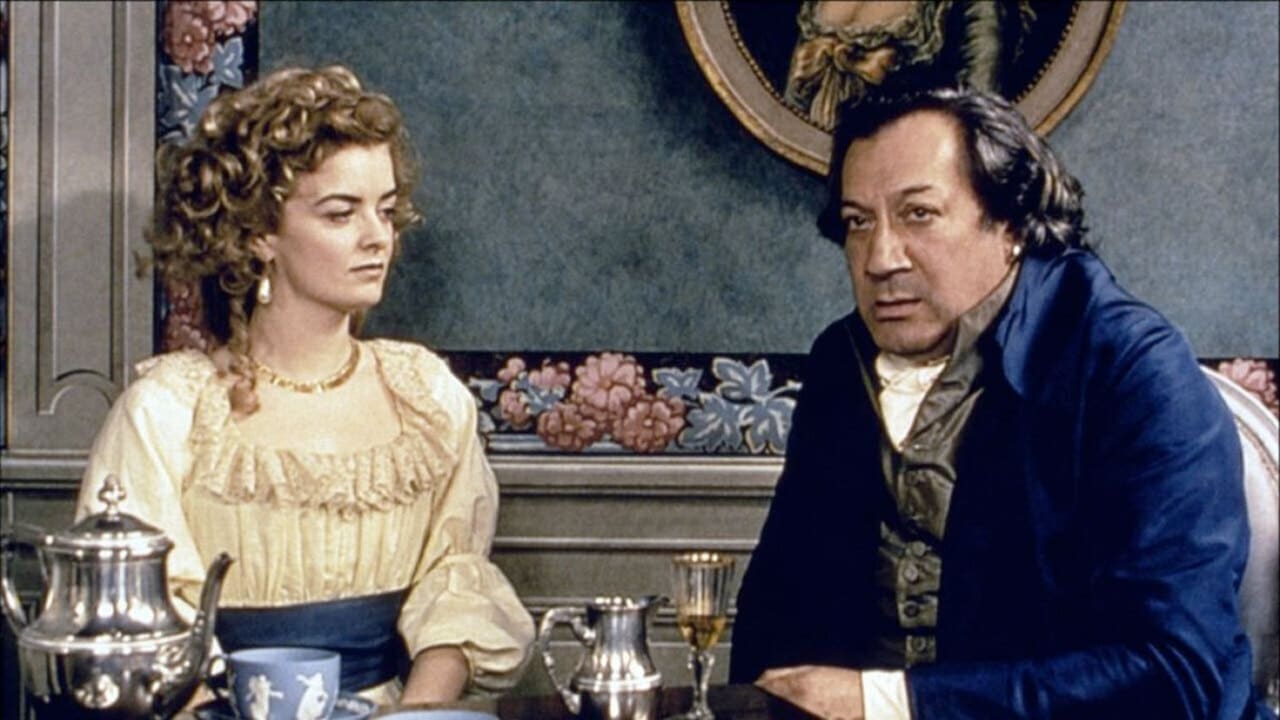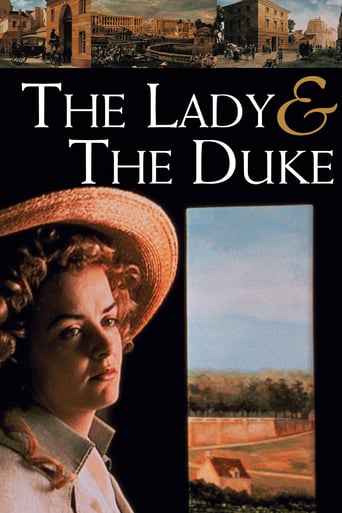

Really Surprised!
... View MoreGreat Film overall
... View MoreIt is an exhilarating, distressing, funny and profound film, with one of the more memorable film scores in years,
... View MoreBlistering performances.
... View MoreAs interesting as a sheet of cardboard, this dispensable period piece has little going for it. It's overly wordy and fails spectacularly to evoke the tension and fear that the real-life characters must have felt as they dodged the French Revolution's fickle hand of justice. Eric Rohmer at 82? It shows.
... View More"The Lady and the Duke" is based on a true story and taken directly from the memoirs of Grace Elliott, a well-to-do Scottish woman who lived in France during the French Revolution. The film concentrates on her months in Paris during the later years of the revolution (1793-1794), better known as the Reign of Terror. Director Eric Rohmer took the unusual and odd step of filming his actors superimposed over 18th Century scenic paintings. Perhaps it was his intention to contrast these inanimate objects with the real-life pain and utter misery of his subjects' existence. Lucy Russell is elegant and believable as Grace Elliott, a woman torn between loyalties to an old lover and her former aristocratic way of life. As the Revolution becomes more horrific, she sees all her friends who haven't been wise enough to leave France annihilated, and begins to wish she had left the country herself. Jean-Claude Dreyfus is also excellent as the Duke of Orleans, Grace's former lover who still remains a close friend. Although a royal himself, he makes the ruinous decision to vote for the King's death which has disastrous results for both himself and his country. Grace and the Duke's relationship are the centerpiece of the movie juxtaposed against the changing times and the coming doom and radical phase of the Terror. Director Rohmer's movie is both exquisitely mounted and historically knowledgeable. He has taken one of history's more volatile times and brought the audience into all the suffering and injustices of that period. Although one might need to know a bit of history regarding the French Revolution beforehand, this movie can still be viewed by anyone who has sympathy for the human condition. Man's inhumanity to Man is well on display in "The Lady and the Duke".
... View MoreI'm worried that a trend is developing (call it "Lucas's Disease") in which moviegoers care more about digital sets than the story being told. The digital sets in this film are very attractive and are used much better than in "Attack of the Clones." The performances are moderately good (The heroine's dependence on servants reminded me of Scarlett O'Hara).Neither of these makes up for the poor script, though. The heroine's royalist sentiments are zero-dimensional ("But he's the king!"). Her flight from Paris is completely devoid of suspense. There's no indication of the smouldering romance that supposedly exists between the lead characters. But the worst part is the repetition! Characters repeat what they said in the previous scene, which was a summary of what happened in the scene before that. I sat through this twice (the flight from Paris and the return to Paris), but when it happened again (the vote), I WALKED OUT. I can't wait for digital sets to become the norm, so that people will again pay attention to the rest of the movie.Oh, and I hope the next film about the French revolution doesn't have Republican soldiers who act like the Keystone Kops.
... View MoreSpoilers herein.I am a newcomer to Rohmer?s work, having seen only two before this. But this is so intelligent, so imaginative, I must rush to see what else I can. He works with the nature of the telling by focusing on the manner of telling. Here, he selects a subject that concerns artifice and abstraction (the aristocratic manners with a former mistress, and theideals of the French revolution). And he presents them according to his understanding of how artificial and abstract they are.The presentation is shocking. If you haven?t seen it, he has flattened all the sets by literally using paintings with people superposed. This is done inside as well where all the walls are flat and have texture painted on them. Doors, cupboards also. We are transported to a theatrical world where the actors not only perform for us, the characters perform for each other. Very clever notion that reminds us how synthetic ?normal? film is.At the same time, we have Rohmer?s constant fixation with how abstract notions interact with reality. Here we have the French revolution. Unlike that which took place in North America the decade before, this was pure ideals not at all practicalized. (Dr Franklin was appalled.) And it was heavy with opportunists and posers. The notion of how things were, how they should be, how one should comport, what constitutes a ?nation,? or ?liberty? -- all abstractions. Presented in the form of dialog between two people who could not shape it.Sex is the driver here, at least of the characters we see. But it is so refined, so submerged one completely forgets the moist clutch and replaces it with the unctious glance. It seems to me that Rohmer?s relationship with his actors and the text is slight, as it should be, allowing him to focus on the space around them. Other filmmakers frame their shots around the principles and a few elements from the environment. Rohmer frames his entirely from the environment, which incidentally flattens everything -- even without the painting trick.This is the logical extension of "Marquis," May Rohmer live long enough to go further.Ted?s Evaluation: 3 of 4 : Worth Watching.IMDB: 10
... View More